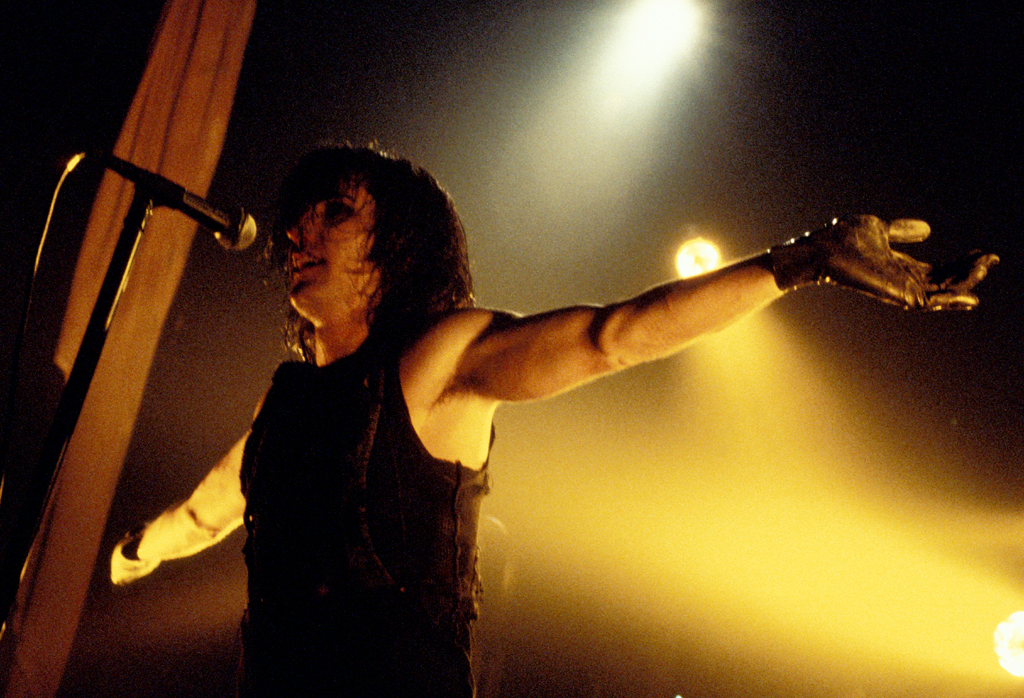 Illustrated by Sam Kieth, Mike Dringenberg, Jill Thompson, Shawn McManus, Marc Hempel,
Michael Zulli, Todd Klein (lettering), Dave McKean (covers)
Illustrated by Sam Kieth, Mike Dringenberg, Jill Thompson, Shawn McManus, Marc Hempel,
Michael Zulli, Todd Klein (lettering), Dave McKean (covers)Where I got the book
My local library has copies of all the bound collections!
Why I’m reading
Another one of those “I’ll get around to reading it eventually” books. I finally decided to give it a go after I saw Boyhood with a friend, and we got to talking about manga and graphic novels. We also talked about a manga called The Gamer that I'm following now. He specifically told me about one small storyline that sounded awesome: a guy in a bar is bragging that death is for suckers and he’s having none of it; Dream and Death decide it would be fun to go ahead and give him immortality. Dream meets up with him every hundred or so years, and eventually people notice and start thinking they’re some sort of mythical conspiracy. In retrospect, I think my friend made it out to be more ‘hilarious hijinks’ than it actually was.
Expectations
90s goth sensibilities, lots of eyeliner, hijinks and messing around with mortals.
So how was it?
First of all, I may have been hopped up on Vicodin for the first few books. I powered through them in a day and a half after getting my wisdom teeth taken out. I’ve eaten mostly baby food and spaghetti-os for the last week. Fun times.
I liked this a lot more than I thought I would, even though it was less “fun” than I was expecting. I was worried it would be over-dramatic and full of dull tropes, which it wasn’t. I should trust Gaiman at this point, I don’t know what I was thinking.
The graphic novels focus on Dream, the sandman, who is one of seven entities called the Endless. The other six are his family: Desire, Delirium, Despair, Death, Destiny, and Destruction… wow, I just realized they all started with a “D.” They exist as anthropomorphic representations of patterns or concepts in the human psyche. Dream isn’t just involved with sleeping dreams; hopes, creativity, waking dreams, etc., are also his jurisdiction.
The story follows Dream’s capture and escape from a sorcerer, righting his past wrongs, searching for his brother, and defending the dream world. His siblings are major characters, along with his servants and several humans. It’s also a story about stories, with all sorts of interwoven side characters and side stories; sometimes you’ll go an entire chapter barely seeing Dream or one of the other Endless.
The artwork is great: creative, imaginative, without getting to “comicbooky.” Dream is so much 90s Trent Reznor it’s not even funny. With maybe a dash of Alan Rickman for flair. It threw me a little that the artwork changes depending on the story, but once I noticed it was happening, I loved it. It’s very subtle. Dream’s clothes were probably the coolest, especially his cape; not sure how I felt about his helm, it was a little too sci-fi buggy.
Recommendation
For fans of mythology, traditional Gothic and Romantic literature.
Feels
Somber and introspective, but not depressing. Loving. Sometimes funny.
Favorites
It’s the family dynamic between the Endless that really makes the story, especially Dream’s relationship with Death, Delirium, and Destruction. The characters are anthropomorphic concepts whose behavior is based on what they represent; but at the same time, it’s a very real family dynamic, not some attempt at philosophizing. Gaiman also gets really deep into itty bitty side characters, making them just as interesting and real as the main characters.
In terms of actual characters, I didn’t fixate on just one, which is unusual for me. I loved Dream, but Delirium, Death, Lucien (the librarian!) and Fiddler’s Green were also favorites. Matthew the crow ended up being a surprisingly touching character, as did Despair.
Least favorites
I wouldn’t say that there was anything missing, but I wanted to see the main character, Dream, go wild at least once. The artwork was fantastic, and the conceptualization of Dream’s powers were so imaginative and cool, and we do see him using it in a lot of creative ways. But… I don’t know, I wish there was a chapter or two where we could just see him create. Dream felt a little fenced in, which is entirely keeping with his character, but seeing him let go for a while could have created contrast and would have been satisfying for me as a reader. Basically, I think it could have benefited from a few more artwork-heavy pages with swirly capes.
For characters, there were a whole bunch that I didn’t necessarily connect with, but that’s fine. The only one that was actually a little disappointing was Desire; I felt like we don’t get much insight into the character or the concept, even though s/he gets a lot of screen time. Despair felt deeper, despite having much less screen time and sort of boring powers.
Writing style
Subtle, very subtle. There was a lot left unsaid, lots of little details, intertwining plots, and the story never spoon-fed you meanings or feelings.
Related reading
- William Shakespeare is actually a side character; Dream commissions his plays A Midsummer Night’s Dream and The Tempest. The folklore fairies Titania and Auberon are characters.
- The Sandman is one of only a few graphic novels to make it onto the New York Times Best Seller list, along with Maus, Watchmen, and The Dark Knight Returns.
- Several other DC comic book characters appear, including John Constantine, Batman, and several Justice League characters.






